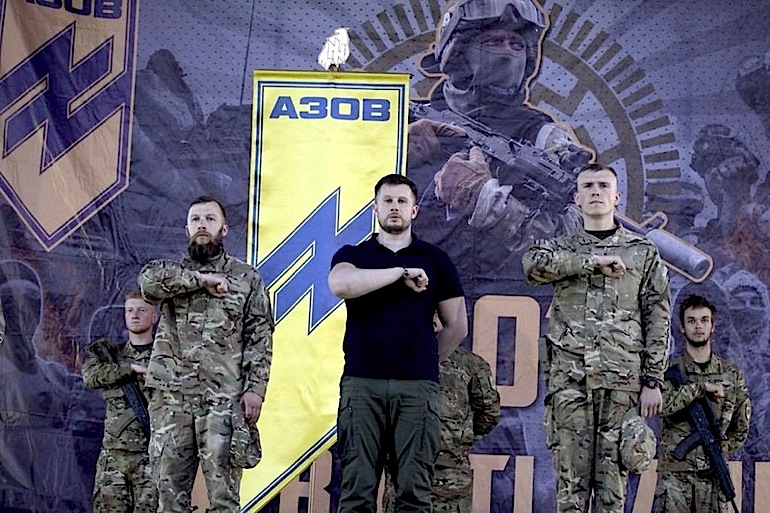However, the “global spring” of 2017-2019 was but a peak moment in the popular insurgencies that spread in the wake of the 2008 financial collapse — a veritable tsunami of proletarian rebellion not seen in decades. The mass uprisings that followed the Great Recession, among them Occupy Wall Street (which started in the U.S. and sparked similar movements in dozens of countries), the Arab Spring, and the Greek workers movement, captured the worldwide popular imagination. Some of these struggles suffered setbacks and defeat. Still, the global revolt ebbed and flowed throughout the 2010s but did not die down, and a fresh wave broke out in 2017.
The pandemic lockdown pushed protesters off the streets in early 2020. But the lull was momentary: Within weeks of the lockdown, protesters were out in force again despite the quarantine and the dangers of public congregation. Alongside these mobilizations, protests against the police murder of George Floyd in May 2020 sparked an anti-racist uprising that brought upwards to 25 million mostly young people into the streets of hundreds of cities across the country, the single largest mass protest in U.S. history. Many Black Lives Matter protesters called for the defunding of police departments — and for investment in a broad range of social services and supports. This call for expanding a social safety net posed a direct challenge to neoliberal capitalism, which funnels state dollars out of working class communities and social welfare programs and into policing, “defense,” and corporate welfare. Moreover, the BLM protests spurred solidarity actions throughout the world as 2020 wore on.
The Pew Research Center has been conducting ongoing polls in the U.S. on views toward capitalism and socialism (although, of course, what people understand to be capitalism and socialism is not clear). According to its 2019 poll, a full 42 percent of U.S. respondents had a favorable view of socialism, although the Pew poll did not break down responses by age groups. But a 2018 Gallup poll found that 51 percent of those aged 18-29 had a favorable view of socialism. Seen in historical context, another Gallup poll found that support for socialism stood at 25 percent in 1942 among the U.S. population overall whereas this increased to 43 percent in 2019.
Revealingly, yet another poll found that support for socialism in the U.S. jumped by nearly 10 percent among young people in 2020, in the midst of the pandemic. This poll found that a full 60 percent of millennials and 57 percent of Generation Z supported a “complete change of our economic system away from capitalism.” Worldwide, a 2020 poll found that a majority of people around the world (56 percent) believe capitalism is doing more harm than good. On a national level, according to the poll, lack of trust in capitalism was highest in Thailand and India (75 percent and 74 percent, respectively), with France close behind (69 percent). Majorities rejected capitalism in many Asian, European, Gulf, African, and Latin American countries. In fact, only in Australia, Canada, the U.S., South Korea, Hong Kong and Japan did majorities disagree with the assertion that capitalism currently did more harm than good.
Masses expressed this anti-capitalist sentiment in an escalation of protest during the pandemic itself. A palpable radicalization appeared to take place among workers and the poor, a heightened sense of solidarity within and across borders that intensified during the pandemic. In the U.S., for instance, no less than 1,000 strikes ripped across the country in the first six months of the contagion. Workers mounted protests to demand their safety. Meanwhile tenants called for rent strikes; immigrant justice activists surrounded detention centers; anti-incarceration organizers demanded the release of prisoners; auto, fast-food and meat processing workers went out on wildcat stoppages to force factories to shut down; homeless people occupied empty houses; and health care workers on the front lines demanded the personal protective equipment they needed to do their jobs and stay safe. For the most part wildcat strikes were organized not by union leadership but from the rank and file.
COVID-19 was thus the lightning bolt before the thunder. “Just a few weeks after lockdowns were widely imposed, protests began to reemerge,” noted the Carnegie Endowment. “Already in April [2020], the number of new protests rose to a high level; approximately one new significant anti-government protest every four days.” And there was no letup to mass protest in 2021, fueled, in the words of the Endowment, by an increasingly authoritarian political landscape and “rising economic insecurity” that “brought public frustration of the boiling point.” It added that many countries that did not previously appear in the tracker registered protests that year. Then, as the global class struggle heated up, the first four months of 2022 saw mass labor strikes breaking out in industries and countries around the world.
Devastating Effects of Capitalist Globalization
In all of their diversity, many of these fights had — and have — a common underlying denominator: an aggressive global capitalism in crisis that is pushing to expand on the backs of working masses who can tolerate no more hardship and deprivation. Capitalist states face spiraling crises of legitimacy after decades of hardship and social decay wrought by neoliberalism, aggravated by these states’ inability to manage the COVID contagion and the economic free-fall it triggered. The extent of polarization of wealth and power, of deprivation and misery among the world’s poor majority, already defied belief prior to the outbreak. In 2018, just 17 global financial conglomerates collectively managed $41.1 trillion dollars, more than half the gross domestic product of the entire planet. That same year, the richest 1 percent of humanity led by 36 million millionaires and 2,400 billionaires controlled more than half of the world’s wealth while the bottom 80 percent — nearly 6 billion people — had to make do with just 5 percent of this wealth.
Worldwide, 50 percent of all people live on less than $2.50 a day and a full 80 percent live on less than $10 per day. One in three people on the planet suffer from some form of malnutrition, nearly a billion go to bed hungry each night and another 2 billion suffer from food insecurity. Refugees from war, the climate crisis, political repression and economic collapse already number in the hundreds of millions as the social fabric is torn apart and whole communities collapse in peripheral areas. The pandemic followed by the repercussions from the Russian invasion of Ukraine have heightened these conditions even further.
The international development agency Oxfam reported this past Januarythat during the first two years of the COVID-19 pandemic the 10 richest men in the world more than doubled their fortunes, from $700 billion to $1.5 trillion, while 99 percent of humanity saw a fall in their income and 160 million more people fell into poverty. The World Food Program (WFP) reported in May that “the outlook for global acute food insecurity in 2022 is expected to deteriorate further relative to 2021,” a year which, according to the WFP, “surpassed all previous records.” The war in Ukraine “is likely to exacerbate the already severe 2022 acute food insecurity forecasts, given the repercussions of the war on global food, energy and fertilizer prices and supplies.”
Hundreds of millions, perhaps billions of people, have been displaced from countrysides in the Global South in recent decades by neoliberal policies, social cleansing and organized violence such the “war on drugs” and the “war on terror,” both of which have served as instruments of mass displacement and for the violent restructuring and integration of countries and regions into the new global economy. Those displaced stream into the megacities of the world that have become ground zero for mass protests.
The International Labour Office reported that 1.53 billion workers around the world were in “vulnerable” employment arrangements in 2009, representing more than 50 percent of the global workforce, and that in 2018 a majority of the 3.5 billion workers in the world “experienced a lack of material well-being, economic security, equality opportunities or scope for human development.”
As digitalization now drives a new round of worldwide restructuring it promises to extend the precariatization of workers who have employment and also to expand the ranks of humanity excluded from the labor market, while the climate crisis will generate water and food shortages, displace hundreds of millions more, and increase exposure to natural disasters.
This social crisis is explosive. It fuels mass protest by the oppressed and leads the ruling groups to deploy an ever more omnipresent global police state to contain the rebellion of the global working and popular classes. As the global civil war heats up in the post-pandemic world, the social fabric is coming undone. The crisis generates enormous political tensions that must be managed by the ruling groups in the face of societal disintegration and political collapse in many countries. It animates geopolitical conflict as states seek to externalize social and political tensions and accelerates the breakdown of the post-World War II international order, increasing the danger of international military conflagration (witness the Ukraine conflict).
Pandemic Repression and Global Police State
COVID-19 was in certain respects a blessing in disguise for the ruling class. The contagion forced protesters off the streets momentarily and gave capitalist states a respite with which to gather their repressive forces and deploy them against restive populations. The wave of repression and brutality unleashed by these states against their own citizens simply cannot be explained by the need for these states to keep them safe. To the contrary, the pandemic provided an expedient smokescreen with which to push back against the global revolt.
The case of India is revealing. Up to 150 million workers went on strike in January 2019. This was followed later that year by months of protest against proposed changes to a citizenship law that would discriminate against Muslims and by a second general strike in 2020 that brought out 250 million workers and farmers — the single largest labor mobilization in world history. The pandemic curfew imposed by the government conveniently undercut the civic uprising. When the government began to impose strict local lockdowns as the virus spread, it singled out neighborhoods identified with the protests. In these areas, heavy police barricades locked in residents for weeks. The government also forced tens of millions of striking migrant workers to march to their home villages for lockdown there, enduring on the way pitiless state repression, involving extreme dehumanization, deaths in custody, and mass arrests (all this while Mukesh Ambani, the richest man in India, increased his wealth by $12 million per hour during the pandemic).
In the United States, a wave of worker mobilizations that spread even before the COVID-19 contagion, led by a number of mass teachers strikes in 2018 and 2019, exploded during the pandemic, thanks to dismal working and unsafe working conditions in schools amid the pandemic.
The monumental 2020 Black Lives Matter uprisings were met with particularly brutal state repression. Fearful of losing control, the ruling groups left no holds barred in unleashing the state’s repressive apparatus against the largely peaceful protesters, leaving at least 14 dead, hundreds of wounded and some 10,000 arrested. (I myself participated in the protests in my city of residence, Los Angeles, where I witnessed the use by militarized police and national guard units of tear gas, stun grenades, taser guns, pepper spray, rubber bullets, and batons against protesters.)
Governments around the world centralized the response to the pandemic and many declared states of emergencies, in effect, imposing what some called “medical martial law.” Such centralized coordination may have been necessary to confront the health crisis. But centralization of emergency powers in authoritarian capitalist states was used to deploy police and military forces, to censure any criticism of governments, to contain discontent, heighten surveillance and impose repressive social control — that is, to push forward the global police state. In country after country, emergency powers were used to selectively ban protests on the grounds that they spread COVID-19, harass dissidents, censor journalists and scapegoat minority groups. At least 158 governments imposed restrictions on demonstrations.
In many countries, governments required citizens to carry documents verifying their “right” to be out of their homes during the lockdown. The idea seems to have been merely to get populations accustomed to producing papers on demand, to ask permission to exist in public space. In the Philippines, strongman President Rodrigo Duterte issued shoot-to-kill orders for anyone defying the stay-at-home lockdown, while his government stepped up its campaign of extra-judicial killing of thousands of supposed criminals. In Latin America, charged Amnesty International, governments turned to arbitrary, punitive and repressive tactics to enforce compliance with quarantine measures and clamp down on popular protest. “Added to the structural challenges and massive social and economic divides present prior to the pandemic, these measures only combine to perpetuate inequality and discrimination across the continent.” Such repression was widespread around the world. As I detail in my new book, Global Civil War: Capitalism-Post Pandemic, in country after country the pandemic provided capitalist states with a convenient pretext to crack down on the global revolt, tighten systems of mass surveillance and social control, and pass emergency legislation that gave them sweeping powers to repress the protest movements that had reached a crescendo on the eve of the outbreak.
While a major government response may have been necessary from a public health point of view, it became clear that the “new normal” as the world emerged from the pandemic would involve a more extensive global police state, including permanent mass surveillance and a new biopolitical regime in which states could use “public health” as a new pretext for keeping a lid on the global revolt. States used what international relations scholar Kees van der Pijl referred to as a “bio-political emergency” to further normalize and institutionalize state surveillance and repressive control in a way reminiscent of the aftermath of the 2001 attacks. In the wake of those attacks, 140 countries passed draconian “anti-terrorist” security legislation that often made legal the repression of social movements and political dissent. The laws remained in place long after the 2001 events.
Political Violence Pandemics
A recent report by Lloyd’s of London, a global insurance and financial conglomerate, warned that “instances of political violence contagion are becoming more frequent” and headed towards what it terms “PV [political violence] pandemics.” It identified so-called “super-strains” of political violence. Among what Lloyd’s deems as these super-strains are “anti-imperialist” “independence movements,” social movements calling for the removal of an “occupying force,” “mass pro-reform protests against national government[s],” and “armed insurrection” inspired by “Marxism” and “Islamism.”
State responses to this “political violence” are big business. According to a 2016 report, Global Riot Control System Market, 2016–2020, which wasprepared by a global business intelligence firm whose clients include Fortune 500 companies, in the next few years there will be a multi-billion-dollar boom in the worldwide market for “riot control systems.” The report forecast “a dramatic rise in civil unrest around the world.”
Historically, labor militancy and mass protest unfold in waves, calibrated to capitalist expansion and crises, wars and major political changes. The ruling groups managed to beat back the last major cycle of worldwide mobilization from below, in the 1960s and early 1970s, through capitalist globalization and the neoliberal counterrevolution. But this time circumstances are different. Global capitalism is reaching limits to its expansion, given the ecological meltdown and the escalating threat of nuclear confrontation. The crisis is unprecedented and also existential. In addition, the global economy and society are more integrated and interdependent than ever, and global communications connect communities in resistance with one another across borders and on a planetary scale.
Short of overthrowing the system, the only way out of the social crisis for the mass of humanity is a reversal of escalating inequalities through a radical redistribution of wealth and power downward and through drastic environmental measures. The challenge for emancipatory struggles is how to translate mass revolt into a project that can challenge the power of global capital and bring about such a radical redistribution. To date, the global revolt has spread unevenly and faces many challenges, including fragmentation, absorption by capitalist culture, and for the most part the lack of coherent left ideology and a vision of a transformative project beyond immediate demands. To effectively fight back, disjointed movements must find ways to come together into a larger emancipatory project, and develop creative strategies to push such a project forward.
https://truthout.org/articles/mass-protest-is-rising-can-it-confront-global-capitalism/






















